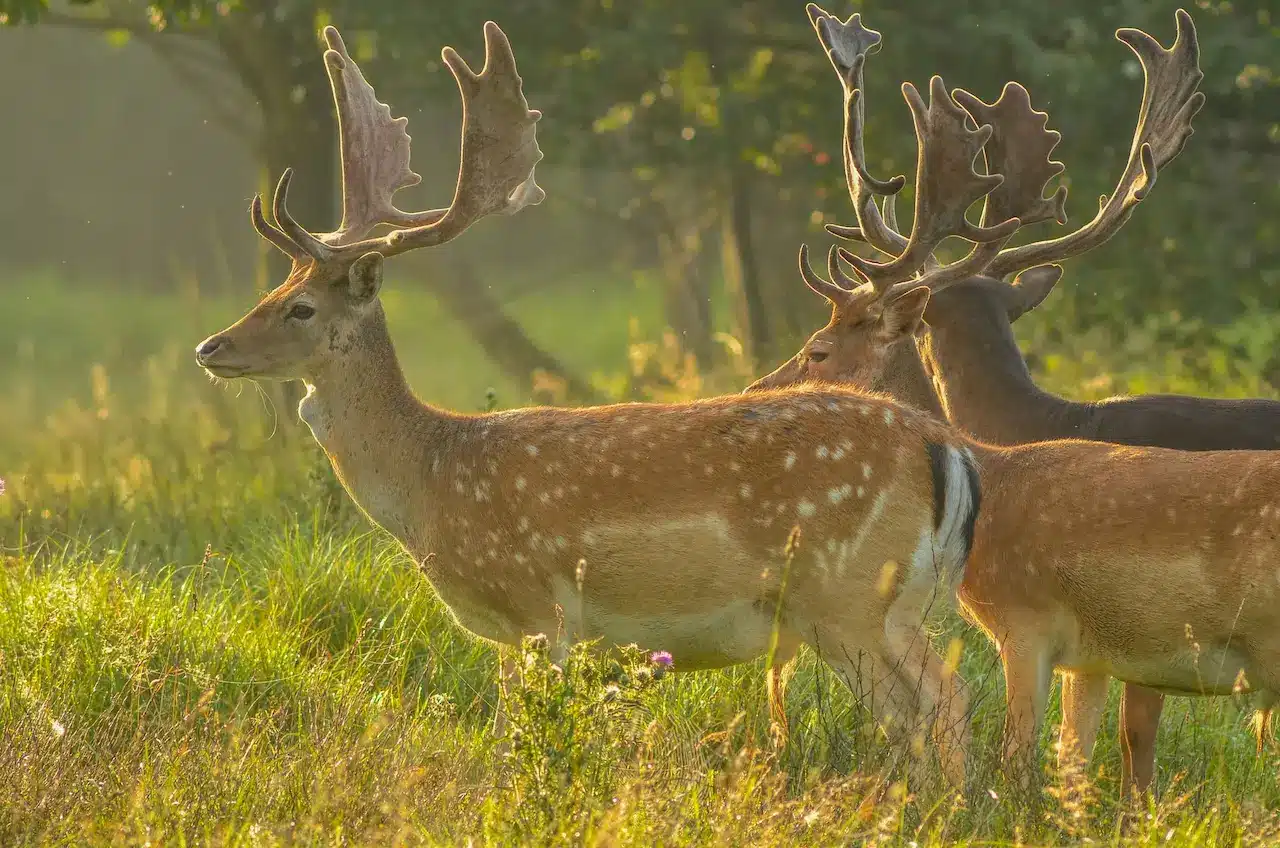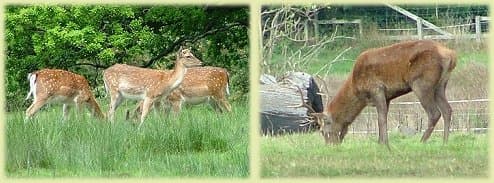Deer Watching in the New Forest

The
Deer Watching in the New Forest
There are 5 species of deer in the New Forest, two of which, sika and muntjak, you’ll probably never see! But the other 3 species, fallow, roe and red deer are not unusual to see, although it has to be said that red deer are found in only a few select places of the Forest.
By far the most commonly seen deer are the fallow deer and, although shy, the large population of them means that spotting fallow bucks and does while out on a quiet walk is a fairly likely thing.
For an almost guaranteed deer watching experience in the New Forest, two places are year-round homes to a herd of fallow deer and a herd of red deer; Bolderwood Deer Sanctuary for fallows and the deer park in front of the Burley Manor Hotel at Burley, for the reds.
Deer watching at these locations is as easy as it gets, but sightings aren’t guaranteed simply because the deer can easily hide themselves from public view, particularly at weekends!

For some non-deer sanctuary deer watching in the New Forest, almost any of the countless walks within the Forest can reward you with deer sightings. Weekdays are better than weekends for spotting deer, simply because the number of people out and about in the Forest on a weekend means more noise and disturbance, which generally forces all the deer to retreat deep into the undergrowth.
But if you are out on a quiet walk, there’s a good chance you’ll spot fallow, roe, and even red deer.
As previously mentioned, red deer are limited to a few select areas within the New Forest, notably the large expanses of heathland in the southwestern corner of the National Park (the Burley area) and the Ober Heath area, west of Brockenhurst. Fallow and roes, however, are widespread throughout the Forest.

As pictured right, fallow deer can often be seen lurking in the undergrowth, and they won’t always bolt completely out of sight, but instead retreat to a safe distance and watch you walk by.
The much smaller roe deer, however, will often disappear completely if the undergrowth is thick, their small size being a big advantage for this. And fallow deer are more likely to be seen in numbers, whereas roe deer often prefer a solitary existence. Red deer, like fallow, prefer to stay together. If you are lucky enough to spot a red deer, then the chances are that more are very close by.
It goes without saying that deer watching in the New Forest is always going to be hit-and-miss, but you can maximise your chances by selecting the quieter places of the Forest for your walk, and by the clothing you wear. Dark coloured green or brown ‘rustle-free’ coat and trousers are ideal, and walking on the grassy edge of gravel tracks rather than the gravel itself will also help by keeping footstep noises to a minimum.
A pair of binoculars is a must!
Without doubt, the most exciting time of year for New Forest deer watching is early to mid October when the fallow and red deer start their courting actions, during the short period of time known as the rut.
Hormonally-charged males put on an impressive show as they fight to build their harem of females, and if you’re lucky you might see two red stags or fallow bucks locked in an antler to antler battle! But you need to know where to go, as the deer only fight at certain rutting grounds within the New Forest, some of which are thought to be centuries old.
Although watching two stags or bucks fighting is a privilege to see, it is a rare treat to catch them in action. But if you are deer watching at this special time of year, you’ll almost certainly hear them barking or clashing antlers amongst the trees.
Deer watching in the New Forest, outside of the aforementioned sanctuaries, isn’t difficult so long as you go prepared and are prepared to be patient!

